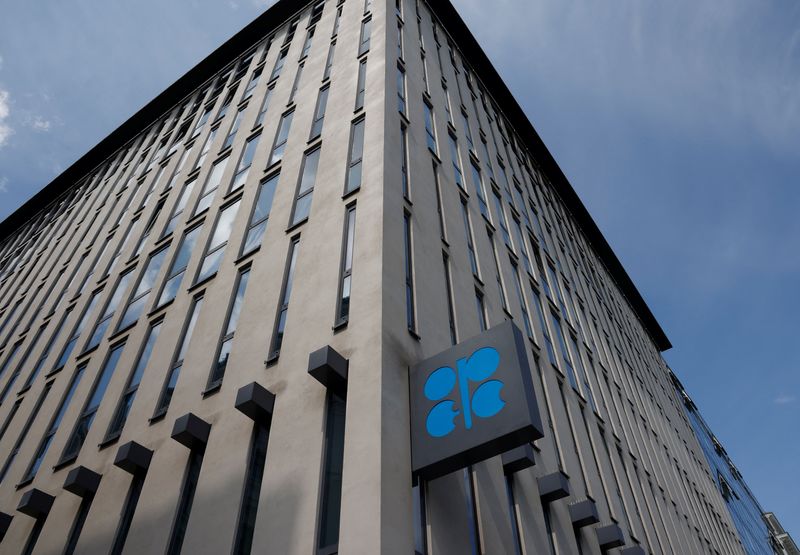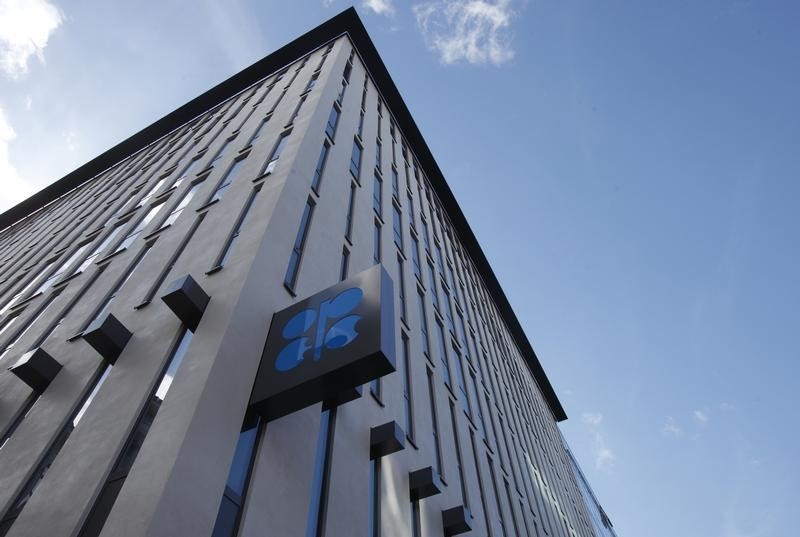By Alex Lawler, Olesya Astakhova and Maha El Dahan
LONDON/MOSCOW/DUBAI (Reuters) -OPEC+ on Thursday postponed the start of oil production increases by three months to April and extended the full unwinding of cuts by a year to the end of 2026 due to weak demand and booming output outside the group.
OPEC+, which pumps about half the world’s oil, had planned to start phasing out cuts from October 2024, but a slowdown in global demand and rising production elsewhere forced OPEC+ to repeatedly postpone the plans to set.
OPEC+ groups the Organization of the Petroleum Exporting Countries and allies such as Russia.
Despite the group’s supply constraints, the global oil benchmark has remained largely within the $70 to $80 per barrel range this year. It was trading around $72 a barrel on Thursday, after hitting a 2024 low below $69 in September.
“They have been talking about this production increase since June, but they are still postponing it,” said Bjarne Schieldrop, chief commodity analyst at SEB. “This means that there is no upside potential for the oil price in the coming years.”
Schieldrop said the oil market will now shift focus to the actions of newly elected US President Donald Trump, who could impose new sanctions on Iran and tariffs on China and has promised an end to the war in Ukraine.
Amrita Sen of Energy Aspects said the OPEC+ decision was bullish as it removed most of the oversupply for next year: “But the market believes Trump wants low oil prices and therefore remains bearish despite the OPEC+ announcement.”
During his previous term as US president in 2017-2021, Trump repeatedly attacked OPEC+ over high oil prices and asked Saudi Arabia to release more oil if the kingdom wanted US support against its archrival Iran.
DEEP CUTTINGS
OPEC+ members are holding back 5.86 million barrels of production per day, or about 5.7% of global demand, in a series of steps agreed since 2022 to support the market.
The steps include cuts of 2 million barrels per day across the group, 1.65 million barrels per day in the first phase of voluntary cuts by eight members and a further 2.2 million barrels in the second phase of voluntary cuts by the same eight members.
On Thursday, OPEC+ agreed to extend cuts of 2 million barrels per day and 1.65 million barrels per day from the end of 2025 to the end of 2026, according to statements from the group.
The gradual unwinding of the 2.2 million cuts will begin from April 2025 with monthly increases of 138,000 barrels per day, according to Reuters calculations, and will last 18 months until September 2026.

The group had previously planned to reverse cuts of 2.2 million over 12 months through monthly production increases of 180,000 barrels per day.
OPEC+ also agreed to allow the United Arab Emirates to gradually increase production by 300,000 barrels per day from April to the end of September 2026, instead of the previous plan to start doing so in January 2025.


